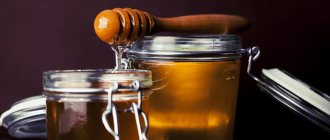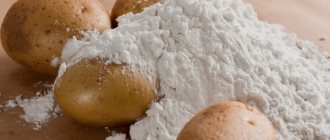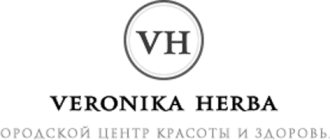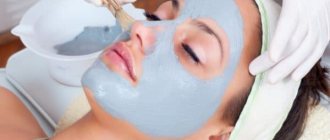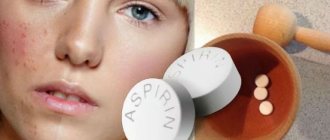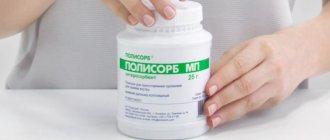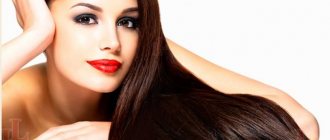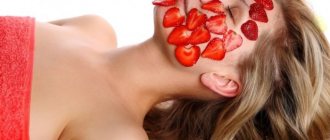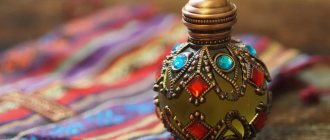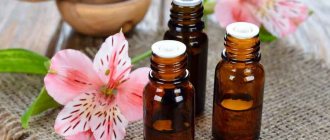Published: August 2, 2017
The spicy spice, which first appeared in Ceylon, is most often used in the kitchen - in baked goods and desserts. However, the rich composition of cinnamon microelements makes it indispensable in facial care: there are several options for simple masks that improve the appearance of the skin, relieve signs of fatigue, and help hide wrinkles.
The seasoning is suitable for all skin types and is contraindicated only in case of individual intolerance. Cinnamon masks do not require complex ingredients and are easily made from products that every housewife has in her home.
What is cinnamon made of?
Cinnamon is the inner layer of bark of small shoots of an evergreen tree that can reach 15-20 meters in height. Today, such plants grow not only in Ceylon, but also in China, Brazil and other southern countries.
Harvesting cinnamon takes a long time and is divided into several stages:
- Growing a tree (about 2 years required).
- Cutting down the tree at the root (at this stage a small stump remains on the ground).
- Waiting for young shoots to appear on the stump (takes about a year).
- Cutting off the shoots, removing their inner bark and drying it thoroughly.
This bark, losing moisture, turns into a spice familiar to us - it is rolled into thin tubes, which are cut, packaged and sent to store shelves.
Cinnamon has a rich composition of microelements that are equally beneficial for human health:
- phosphorus;
- manganese;
- iron;
- essential oil;
- tannins;
- vitamins C, E and K;
- choline;
- thiamine;
- beta carotene.
In stores you can find 3 types of spices - sticks, powder and oil. The former are often used only to decorate dishes, but powder and oil are often included in cosmetics.
Properties and benefits of cinnamon for facial skin
The composition of the spice has a systemic effect on the epidermis:
- tonic.
Pores are reduced, the skin takes on a radiant appearance, and the process of renewal of epidermal cells begins.
- antibacterial.
Cinnamon effectively fights microbes trapped on the surface of the skin, reduces inflammation and irritation of various kinds.
- antioxidant.
Thanks to the antioxidants contained in cinnamon, the skin becomes smooth, velvety and elastic.
- rejuvenating.
The seasoning activates cell function, improves blood circulation on the face, smoothes out fine wrinkles and gives the skin a fresh and renewed appearance.
We must not forget about the general anti-stress property of the spice - inhaling the aroma of cinnamon while preparing and keeping the mask replaces a full-fledged aromatherapy session, calms the nerves, invigorates when tired and reduces stress levels.
What scalp diseases lead to hair loss?
Seborrhea
(peeling) appears due to dysfunction of the sebaceous glands. With oily seborrhea, the sebaceous glands are overactive; with dry seborrhea, on the contrary, skin sensitivity is observed. In both cases, seborrhea is accompanied by dandruff and itching.
Furunculosis
- inflammation of the hair follicles and sebaceous glands - is caused by staphylococcus bacteria, which can penetrate the scalp through microcracks.
Mycosis
- fungal disease. It is accompanied by itching, the formation of pustules, and darkening of the scalp. With mycosis, areas of baldness appear on the head.
Alopecia
(baldness) occurs due to various reasons, which can be divided into two types: external (frequent stress, infectious diseases, trauma and damage to the surface of the head); internal (hormonal imbalances, metabolic disorders, predisposition at the gene level (heredity).
Indications and contraindications for use in cosmetology
In cosmetology, cinnamon is used to eliminate unwanted effects on different skin types:
- removes acne, inflammation and redness on problem skin;
- tightens pores, promotes deep cleansing of oily facial skin;
- supports the functioning of blood vessels, provokes increased production of collagen in aging skin;
- nourishes and tones dry skin.
Contraindications to the use of cinnamon for cosmetic purposes are individual intolerance to the product, severe inflammation of the skin and nervous excitability.
Honey for acne: beneficial properties of the product
The active components of honey have a beneficial effect on facial skin. It nourishes the skin, evens out the complexion, removes blemishes and irritations. Honey has a significant anti-inflammatory effect:
- Honey has an antibacterial effect. It relieves inflammation and stops the process of suppuration.
- Honey not only removes existing pimples, but also prevents the appearance of new ones.
- Honey cleanses and restores the epidermis, removing dead particles and other impurities.
Cinnamon masks by skin type: popular recipes
The following composition is applied to oily skin:
- honey (1 tbsp);
- cinnamon (0.5 tsp);
- chicken egg white.
Mix everything, cover your face with the mixture and leave for 20-25 minutes, then rinse with water. Use 1-2 times a week.
For the dry type, the composition is the same, but use egg yolk instead of white. The application regimen is the same as in the mask for oily skin.
Recipe for normal and combination skin:
- lemon juice (1 tsp);
- cinnamon (1 tsp);
- a quarter of an overripe banana.
Apply the composition to the face for 10 minutes, rinse with water. Apply once a week.
Wrinkle reduction mask:
- honey (2 tbsp);
- milk (2 tbsp.).
Heat the mixture, then add 0.5 tsp. cinnamon. Keep the mixture on your face for no more than 30 minutes, then rinse with warm water. Apply the mask 1-2 times a week.
Mask against comedones, acne and various rashes:
- 1 egg white (beaten);
- orange oil (3-4 drops);
- cinnamon (1 tsp);
- sugar (1 tsp).
The composition is applied for at least 25 minutes and then washed off with water. Frequency of use: 2-3 times in 7 days.
Rejuvenating mask:
- oatmeal (3 tbsp);
- cinnamon (2 tsp);
- dry cream (3 tsp);
- vitamin E in oil (2-5 drops);
- warm water (0.5 cups).
Leave the mixture on your face for 10-15 minutes and then rinse with warm water. You should use the mask at least 2 times a week.
The recipe for a mask with cinnamon and honey that improves skin condition is in the video.
Application: what to pay attention to
Before the procedure, the skin must be thoroughly cleansed. Makeup is removed with soft milk or micellar water, then the face can be rinsed with mineral water or floral hydrosol. Then you need to wash your face with a soft gel. Oatmeal, which is applied to damp skin, is also suitable. After a light massage, your face should be rinsed. The flakes exfoliate dead cells, improving skin receptivity.
If you have increased oiliness, acne or blackheads, it is useful to take a steam bath or put a warming compress on your face using a towel soaked in hot water. This procedure is contraindicated in case of rosacea or hypersensitivity of the skin.
It is convenient to distribute the composition over the face with a special brush made of elastic synthetic fibers. The composition is not applied to the area around the eyes and lips. You need to wash off the mask with warm or cool running water; after the procedure, you can wipe your face with tonic or herbal decoction. It is worth remembering that cinnamon has an irritating effect and is not suitable for daily procedures; to tidy up the skin, it is enough to do 1-2 masks a week.
Tips before using cinnamon masks at home
- Before applying any mask, the skin of the face should be thoroughly cleansed of makeup and impurities using usual means.
- Masks are best prepared for one use, since they contain natural ingredients that should not be stored for a long time, even in the refrigerator.
- It is better to follow the frequency of use as recommended in the recipe.
2 hours before applying any cinnamon mask to your face, you should conduct an allergy test: apply a teaspoon of the prepared mixture to the skin around the elbow, rinse after 15 minutes. If within 1.5 hours there is no cough, burning in the throat, irritation in the test area, there is no allergy to cinnamon and the mask can be used on the face.
Honey secrets
In addition to some of the above-mentioned vitamins, honey contains all the microelements and amino acids necessary for beauty and youth:
- potassium;
- copper;
- iron;
- phosphorus;
- calcium, etc.;
- fructose;
- lactose.
Thanks to such a rich composition, this product is successfully used in skin care products. But you should keep in mind that honey is a strong allergen, so before using it in masks, you need to apply a little of the prepared mixture to your wrist to check the reaction to tolerance.
An overdose of cinnamon can lead to hyperemia (literally, plethora) of the skin.
The best recipes for face masks made from honey and eggs are presented here.
Sweetness to joy
Relief from acne - henna face mask.
Reviews on the use of cinnamon for the face
Due to a long period of poor nutrition for a year, small pimples appeared on my face. I haven’t contacted a cosmetologist yet, I decided to use folk remedies. On the Internet I came across information about the benefits of cinnamon for facial skin, read the reviews and decided to try it, especially since I love the smell of this seasoning. My goal was to get rid of breakouts, refresh my skin and reduce pores, especially in the nose area.
For two weeks, I used a mask with cinnamon and orange oil every 3 days, and tried not to use other skin care products as much as possible (with the exception of makeup remover foam).
My home procedures took place in the evening according to a simple algorithm:
- cleansing the skin of dirt and makeup using foam;
- applying the mask for 25 minutes;
- washing off the mask with warm water;
- 10 minutes after rinsing, apply night cream.
After the first application, I didn’t see any effect, but the feeling on the skin was pleasant, so I decided to continue my home course to combat acne. I noticed the first effect after about a week and a half - more rashes disappeared from my forehead, and after 2 weeks my face noticeably cleared up. I plan to renew the use of the mask from time to time so that the effect lasts for a long time.
Alina Kostomarova, 24 years old
This winter I noticed the first wrinkles in the corners of my eyes. I didn’t really like them, but I decided not to take any drastic steps like skin tightening and the like. I heard from a friend about the benefits of cinnamon for aging skin, opened a search engine and for a very long time read everything I found on this subject, and was interested in the reviews of other girls.
I just wanted to hide wrinkles, so I chose a mask that was not the most potent in composition. It was a simple recipe with cinnamon, honey and milk. I carried out the procedure at different times of the day, when my busy schedule allowed, about four times in total. I did this:
- cleansed my face with micellar water;
- applied the mask for 20 minutes;
- I washed it off with regular warm water.
Result: changes were noticeable immediately after the first application. The skin noticeably tightened and brightened a little. The advantages of the mask include ease of preparation and quick effect, but there is a drawback - the result is not noticeable for a very long time. If you make a mask in the morning, the feeling of skin tightness and its fresh appearance will last until the evening. But as a pleasant procedure, I liked the mask, I think I will use it many more times.
Evgenia Raikova, 33 years old.
Thus, cinnamon is excellent for cosmetic purposes. Skin care using this aromatic seasoning quickly gives results. Many women appreciated the ease of preparation of cinnamon products, their pleasant aroma and ease of use.
Difficult choice
It is impossible to determine the best drug; they are all just building blocks in an integrated approach. Success in treating diabetes mellitus largely depends on the patient. In order to get the effect of taking drugs, not only the doctor must choose the right regimen and combine drugs, taking into account the risks from the kidneys, heart, and concomitant diseases. A person is required to change their lifestyle, eating habits, exercise, monitor glucose levels daily, keep a diary, and follow a diet. Only together can we achieve stable blood glucose levels.
